Opening the New Mentone Theatre: 1928
Mentone’s picture theatre was a very popular place of entertainment in the three decades after its opening in 1928. As the years rolled on into the forties and fifties patrons wondered why it was called the ‘new’ theatre. That name came as a result of the high drama surrounding the building of this large cinema in the late twenties. To tell this story we must go back to the early 1920s.
By the end of World War One the silent movies had captured the imagination of most people. The patrons flocked to see them in droves. During the war years and through the 1920s Mentone Skating Rink in Brindisi Street had become the venue for movies each weekend and it began to be called ‘the picture theatre’ by local moviegoers. It was not a theatre. In reality it was a huge municipal barn, a place that the Council hired out for roller skating, meetings, dances, grand annual balls and other events, including the movies shown by Mr Carr, the promoter who dealt with certain Melbourne film distributors. Carr ran the silent movies in the old skating rink for over a decade, providing seating as well as the piano that gave rhythms and moods for the action up on the screen. Charlie Chaplin, Rudolph Valentino, Clara Bow, Buster Keaton. Greta Garbo, Mary Pickford and a whole host of the early movie stars paraded in flickering black and white images across the screen in Mentone’s ‘theatre’ during the jazz age. The movies, with their graphic vision and dramatic subtitles, were generally loved by the Mentone audiences but as time passed some complaints were heard. The venue was uncomfortable, crowded, and not up to the standard of other places where grand cinemas were being built. Enter an entrepreneur, a man with big ideas.

Mentone Skating Rink, 1928. Courtesy Mordialloc and District Historical Society.
Albert Lydford, a native of Bristol in England, migrated to Australia in 1905 and came to Mentone in 1924 aged fifty. He was a building contractor who immediately bought a large tract of land north of Balcombe Road with a frontage on the Point Nepean Road (the current Nepean Highway). It stretched north to William Street with a western edge on Swanston Street near the site of Lydford’s depot and small factory where he manufactured wood stains. Lydford began building houses and shops on this land. He was determined to develop Mentone in a different direction, away from the main street in Mentone Parade. He claimed that the Balcombe Road–Point Nepean Road corner was a natural hub, more accessible to the passing traffic than the existing township, and worthy of more capital investment. Motor cars and trucks were becoming numerous and the Nepean Road was a natural transport link. Lydford ran into opposition from the local business interests who were already set up in the main street and who were on Mordialloc Council, or had the ear of those that were. When he tried to get some work done on roads and footpaths in the area near the Balcombe-Nepean Road junction, where his new shops were planned, he had little success. The area was flood-prone as well. Council talked about this problem but no extra drains materialised. In an attempt to influence policy Lydford ran for Council in 1926 but had no success. He was a newcomer. It was difficult to break into a local society that had its own power structure.
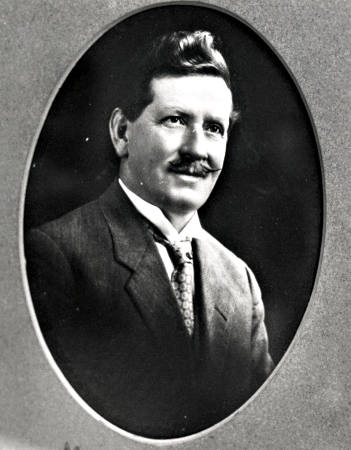
Albert Lydford. Courtesy Mordialloc and District Historical Society.
During 1927 Lydford revealed more of his grand plan for Mentone. With other promoters he formed a company that provided the finance for the erection of a large cinema right at the junction of Balcombe Road and Point Nepean Road. Late in 1927 the grand building began to take shape and excitement grew through the early months of 1928. The Mordialloc City News carried big advertisements and news items about the new picture palace. As the opening night approached Lydford and his backers ran a competition where entrants could win five pounds by guessing the final number of red bricks that would be used to build the theatre. A Cheltenham lady guessed 399,999 and won!
There was not joy in all Mentone hearts as the New Mentone Theatre opening night came nearer. The Council still owned the old theatre in Brindisi Street. Mordialloc Councillors were not enthusiastic about Lydford’s new attraction and the neither was Carr, the incumbent operator of the old theatre. In anticipation of the new theatre’s appeal, Mordialloc Council spent quite a lot of money renovating the old skating rink building, adding a ‘dress circle’ to give some comfort for paying customers. This decision was later criticised as a waste of ratepayers’ money.
The New Mentone Theatre opened with grand ceremonial on May 5th, 1928. It was a black tie affair with live entertainment and movies. Two Paramount films, Beau Sabreur and Jesse James, advertised as Hollywood’s latest offerings, attracted a full house. A young Gary Cooper played the lead in Beau Sabreur, a swashbuckling adventure based on the French Foreign Legion. Evelyn Brent and William Powell were his supporting actors. In addition, the Mentone Symphony Orchestra played renditions from Faust accompanied by well-known classical singers from Melbourne. Before the entertainment the Mordialloc Mayor, Cr Dave White, officially opened the cinema, and the chairman of the company, Thomas Davies, made a glowing speech about its future. Dave White, during the same evening, attended a more modest function at the other picture theatre in the old skating rink building, presiding over the launching of the newly renovated premises. Resurrection, starring Dolores Del Rio and Rod La Roque, was the featured film. During the ensuing week Lydford’s cinema put on three more shows with the era’s top stars including Wallace Beery, Mary Astor, W.C. Fields, Chester Conklin and Buster Keaton luring the patrons in.
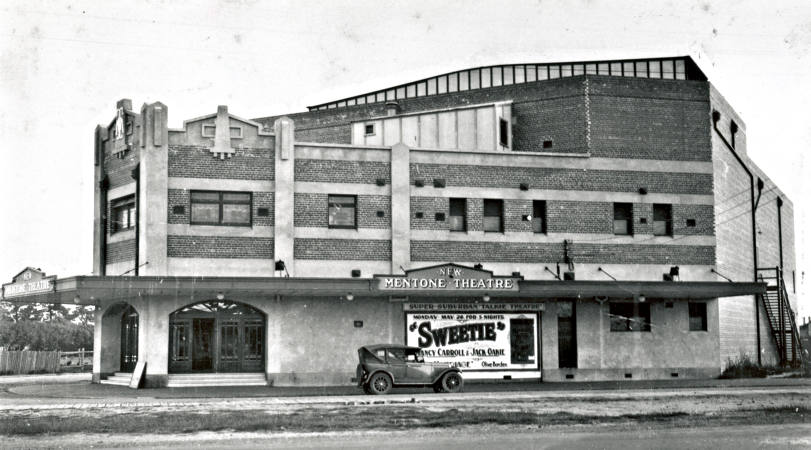
New Mentone Theatre. Courtesy Mordialloc and District Historical Society.
Those promoting the New Mentone Theatre began to make reference to Mentone’s ‘Bright Way’ , alluding to the new electric lighting in Balcombe Road near the theatre. Lydford and his backers advertised the area near the new picture palace as the part of Mentone that had growth prospects. Shops he built next to his cinema began to reap some benefits, and eventually two milk bars were packed at interval times, selling drinks and confectionery.
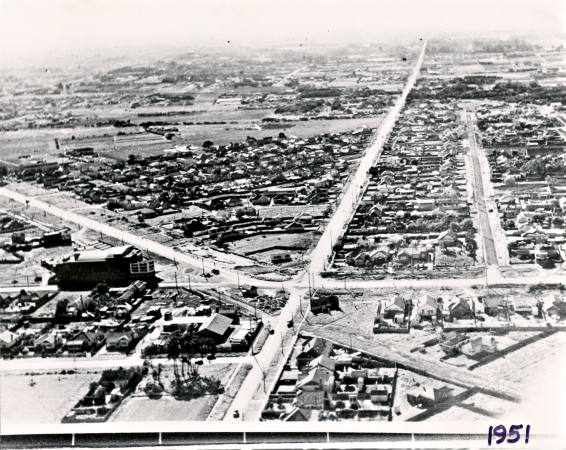
Aerial Photograph of Part of Mentone, Nepean Highway and Warrigal Road, 1951. Courtesy Mordialloc and District Historical Society.
For the rest of 1928 the two Mentone cinemas were in fierce competition with weekly advertisements, side by side, in the local press. Both theatres opened Monday, Wednesday and Saturday nights. Lydford realised that it was vital for the New Mentone Theatre to win this battle. For one thing, the sum of over twenty five thousand pounds had been invested in the enterprise and there was market space for only one picture theatre in the town. The new cinema had distinct advantages. It was a more luxurious building that seated 800 comfortably and had attractive décor, including expensive curtains that hid the screen until they opened majestically for the show to begin. An orchestra pit in front of the stage gained pride of place when live shows were scheduled. Downstairs a spacious foyer surrounded the grand staircase that led to the Lounge and Dress Circle where wide soft leather seats gave comfort to the patrons willing to pay extra. Tickets cost 3 shillings and threepence for the Lounge, the Dress Circle admission was 2 shillings and five pence, while downstairs you paid 2 shillings for back stalls and 1 shilling and threepence for front stalls. In the upstairs section there was an open area outside the actual Lounge and Dress Circle where movie patrons could sit and enjoy a drink or a smoke at interval. Carpets here were luxurious and a baby grand piano often provided music to add a touch of class. The murals were reputed to have been painted by Lydford who had an artistic talent and wanted to put a personal stamp on the building in addition to the structural design of the building that he had created.
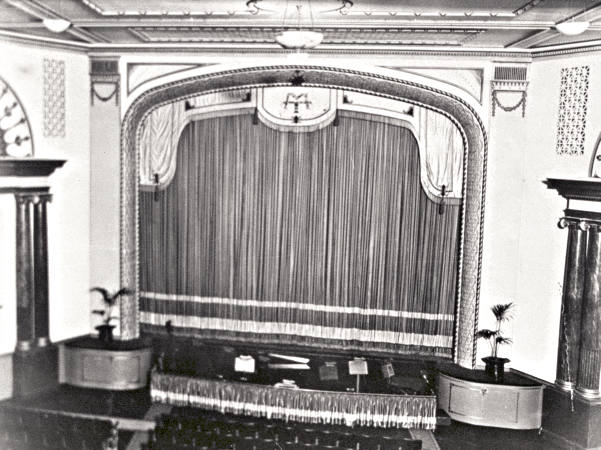
Stage of the New Mentone Theatre. Courtesy Mordialloc and District Historical Society.
The New Mentone Theatre proprietors put huge efforts into making the business a success. Local press advertising was imaginative in presenting large pictorial pieces each week letting patrons know about coming attractions. Live theatre acts from city theatres such as the Tivoli, including singers, comedians and other performers, provided variety between the featured movies each week. In September 1928 a ‘trackless train’ arrived in Mentone as part of a wider promotion by MGM, the Hollywood giant. This replica of a Wild West locomotive was in reality a large motor vehicle decorated in a fancy way to attract children who could go for a ride on the monster. A movie camera was used to record the joy of the train passengers as they rolled down Balcombe Road. This footage was shown later at the theatre. These types of promotions brought the patrons in, but more were to follow. Late in 1928 the New Mentone Theatre operators announced that after New Year’s Day there would be movies six nights every week with at least two changes of program weekly. Up until then no local theatres opened all through the week. Then came the biggest innovation; talkies. By August 1929 the New Mentone Theatre had been fitted out with Western Electric sound technology and the era of silent movies was over, locally. City movie houses had the sound systems already but Lydford claimed that his was the first movie house outside the city itself to screen the talkies.
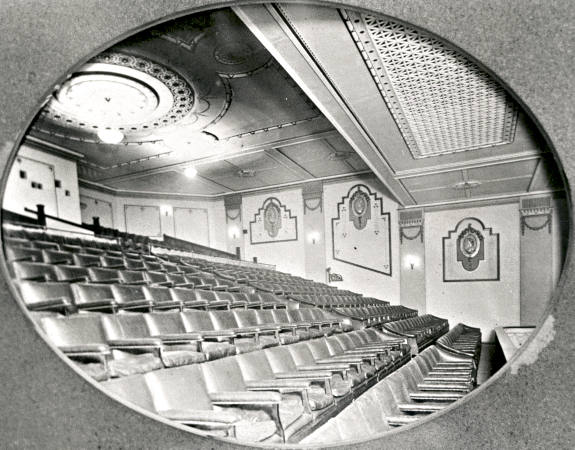
New Mentone Theatre. Courtesy Mordialloc and District Historical Society.
This feverish rush to promote and modernise the facilities at the New Mentone Theatre had a devastating effect on the old theatre near the council chambers in Brindisi Street. Movies were shown on Mondays, Wednesdays and Saturdays in competition with the new cinema, but opening six nights a week was out of the question. The management tried to lure customers by providing a combination of movies and dancing in the weekly opening times. They hired a jazz band and employed professional dancers to teach the Yale Blues, a new dance craze. But the demise of the old picture house was inevitable. Despite Mordialloc Councillors appealing for locals to support their Council-owned picture house, the numbers dropped away and the dancing was discontinued. There was an attempt to re-introduce roller skating as a replacement for the movies but this had limited success. By the early 1930s the old building was described as ‘run down’ and the business was doomed. In 1933 the old structure was completely re-modelled into a large hall with adjacent meeting rooms and became the Mordialloc City Hall and Council Chambers, the latter section having a front entrance on Brindisi Street. These facilities served the community for over three decades.
The New Mentone Theatre flourished until the late 1950s. It offered three changes of program each week. Two movies screened on Mondays and Tuesdays. On Wednesday a new bill went on for just one night, and then the main feature of the week, a classy movie, the likes of Casablanca, was shown from Thursday through to Saturday. The Mentone Theatre patrons saw all the great movies over the thirty-year lifespan of the place. In the early 1930s there was the King Of Jazz with Paul Whiteman and Bing Crosby, as well as Greta Garbo classics. All Quiet On The Western Front screened at that time too. Later in the thirties came Gone With The Wind and then The Wizard Of Oz. The newsreels showed locals the horrors of world war in the forties and then brightened up the scene with MGM musicals of that time and into the fifties. Singing In The Rain with Gene Kelly was one such hit. Shane and High Noon in the early fifties showed that westerns could be classy too. There were hundreds of newsreel highlights: the 1953 Coronation of Elizabeth 2, the 1956 Olympics, Melbourne Cups, Davis Cup matches at Kooyong and a procession of other events. Cartoons with Tom and Jerry, or the likes of Donald Duck, were greeted with shouts of approval from the kids. In the pre-TV era this theatre gave locals their best opportunity to experience a visual impression of the world outside their own neighbourhood.
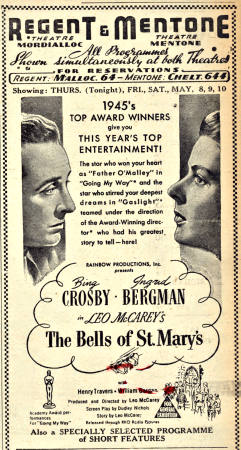
Program for the New Mentone Theatre published in Standard News. Courtesy Kingston Collection.
During its heyday there were full houses almost weekly. Saturday night shows were often booked out in advance, at least in the middle range of seat prices. Some families had permanent bookings at weekends. Locals treated the place as a centre of social activity, a venue for an enjoyable night out that did not involve great expense or long travel times. Courting couples loved its upstairs luxury and families packed the back stalls, while latecomers endured the front stalls where necks had to tilt a little to follow the action. On Saturday afternoons for three decades after 1930 hordes of local kids went to the matinees, enjoying feature movies of the ‘general exhibition’ type, as well as cartoons and serials that tempted the youngsters back each week to see how dangerous situations could be resolved by the valiant heroes. Hopalong Cassidy, and the like, always came out smiling and the bad guys always lost, even if it took till the last episode. During the 1930s the children’s matinees were promoted by providing free comics and bags of lollies, or competitions where footballs, cricket bats, dolls and tea sets could be won.
The Carr family of Mentone ran the theatre for most of its life after purchasing the business from Lydford in 1931. Lydford may have had financial difficulty as the Great Depression hit and builders suffered a huge slowdown in home buying. He continued building later in the thirties and died just after the end of World War 2. When the Carr family bought Mentone Theatre they also operated the Regent at Mordialloc. The same program went on show at both cinemas, necessitating a transfer of the film reels up Nepean Road at interval, so what screened first at Mentone was shown second at Mordialloc, and vice versa.
At the end of 1956 TV came to Melbourne. Small black and white television sets sold rapidly over the next couple of years and by 1959 the movie theatres struggled to attract customers. People stayed home, unable to drag themselves away from a succession of cheap American productions, news transmissions, In Melbourne Tonight and other offerings from the three channels. The marvellous New Mentone Theatre, the booming success of the thirties and forties, met a quick death. In 1960 it closed forever, and within a few years it was demolished and replaced by a service station. Most of its site has now been taken for road intersection extensions and the Doris Stockton Gardens.
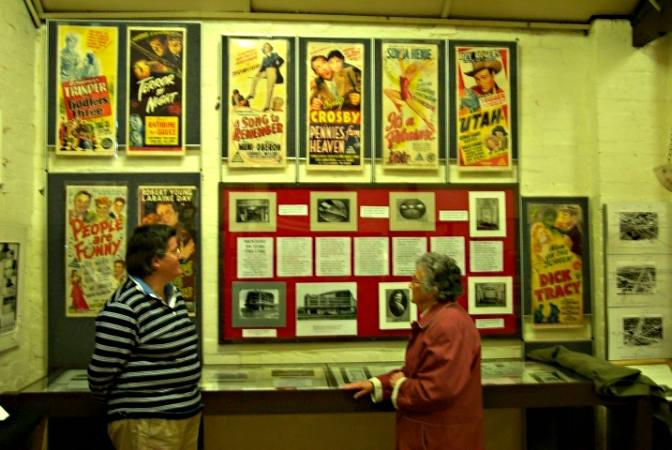
Mentone New Theatre Display at Mordialloc Historical Society. Margaret Hunter and Sheila Johnston. Courtesy Kingston Collection.
